I love to paint things that are a little different. I have developed a technique of paintings I call ‘fractured’. Here’s how I do it using the beautiful Pastel Shades Paint Pan Set.
Equipment Used:
- Derwent Pastel Shades Paint Pan Set
- Derwent Inktense Paper
- Medium Tip Waterbrush
- Inktense Outliner Pencil
I am going to create a fish painting, from my imagination, using my ‘fractured’ technique. With this style of art, the key is to make the subject move and flow using lines, colour and shading. I love to watch fish swim around and have six in the pond in my garden. I can be mesmerised by their gentle swimming. It’s quite meditative.
I drew the stylised fish to begin with, and then from the fish, I drew out lines which turned into a water effect. Wiggling the line to make a wave and then either leading it off the paper, or adding it to another fish, or seaweed!
I then decide how the colours are to be used from the palette. Inspirational new colours such as Pink Flamingo and Coral Pink really got my creative juices flowing!
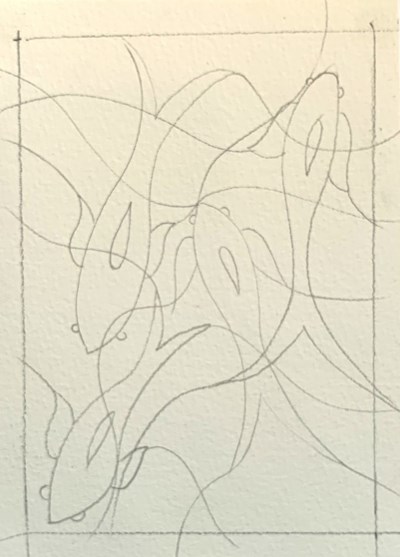
Two of the fish, I decided, would be Coral Pink, Peach and Lemon with a hint of Pink Flamingo. And another two Lavender and Orchid Pink. The trick to make the Fractured work is to make sure that the colours are different at the edge of each line. Preferably one lighter than the other, so you get a lovely, almost stained glass effect. The pastel paint is lovely and soft and when wet, the colours blend beautifully into each other.
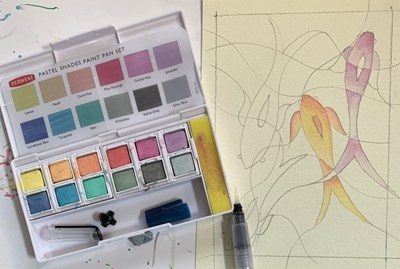
The Inktense paper is a really lovely thick, heavy paper, with a softly dappled surface, just like a watercolour paper. Inktense and pastel paints sit really well on it, softening the wet paint to create a smooth finish.
I then began working on the stylised seaweed. For this, I used Mint and Artichoke colours. Once again making sure that the colours were different at all of the edges. You can deepen the colours a little by adding less water to the paint.
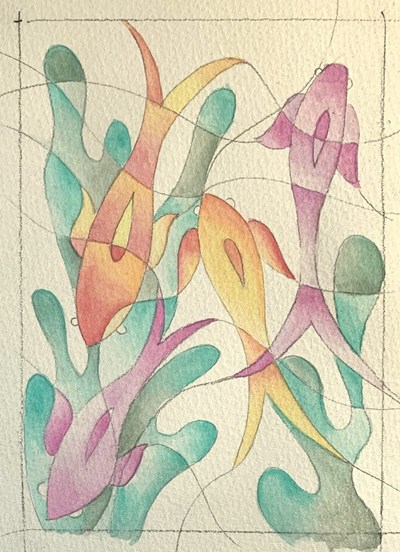
After completing the seaweed, it was time to paint the water. In the pastel palette there are two blues – Cornflower Blue and Turquoise. Each section of water was treated like the fish and seaweed, with light and dark tones blending across the areas. I want soft, flowing lines and a difference in paint strength.
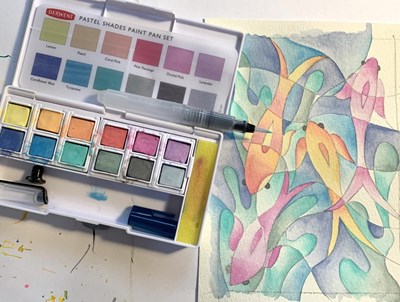
The waterbrush is a fantastic tool which comes as part of the set. The brush tip is lovely and bouncy and one little squeeze of the button, just enough water comes out to wet the paint. The pointy tip remains nice and pointy after quite a lot of use and it’s easy to wipe with the sponge section.
Finally, I check the whole of the painting, making sure each section was crisp and with a light and dark effect along each edge.
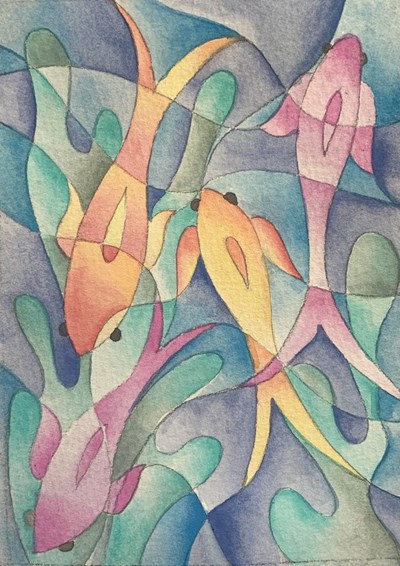
My aim was to create a piece of flowy, soft fish art! I hope you like it and perhaps have a go?!
Thank you to Tiffany Budd for providing this blog for us. You can discover her work on her website, Instagram and Facebook.